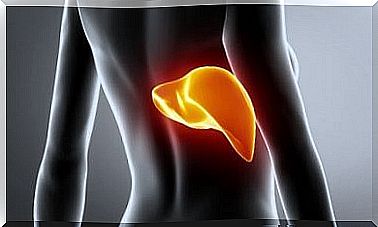The Runnorexia Or Running Addiction

Running is good because it improves circulation, increases brain oxygenation and helps maintain a good BMI. Still, doing it obsessively is bad for your health. In this article we will find out what runnorexia or running addiction consists of.
Any activity can become a problem if done incorrectly, even those that in principle should do well. There is no activity that is healthy in excess, in fact we must always maintain a good balance.
What is runnorexia?
Although running is aimed at improving physical appearance and overall health, running too much can become a serious problem for some people. In this regard, runnorexia (or running addiction) is defined as a behavior disorder.
People who exercise regularly want to improve their quality of life. Still, they can develop a pathological addiction to physical activity.
In the case of runnorexia, the individual completely loses sight of the goal of running: he no longer performs it for the benefits offered, but to satisfy an irrational desire that generates a momentary pleasure in himself.
Social influence is a major risk factor for developing behavioral addictions. For example, a person who does not feel comfortable with their physical appearance may be influenced by the stereotypes of beauty that they will want to achieve at all costs.

How to identify the problem?
As in any other addiction, the main signal of runnorexia is the frequency with which one runs. When you jog every day, as if it were a kind of ritual, the factor of prevalence emerges.
Obviously, there is also a need to understand how important the person attaches to this habit. For example, some feel guilty if they miss even a single day of training, which indicates irrational behavior.
Likewise, other signs that running has become a problem is the intensity of the act itself. Extreme cases involve people who cannot stop, even if they feel unwell. For example, they go for a run despite not having recovered from an injury.
It should be made clear, however, that overtraining and running addiction are not the same thing. The person who overdoes the training may be driven by a form of competition. Runnorexia, on the other hand, does not respond to the desire to achieve a goal, but to the need to perpetrate a given conduct with constancy and in an irrational way.
What signs allow us to recognize runnorexia?
The signs of addiction usually fall into a fairly clear symptomatology. Considering that it is an attitude, let’s find out what are the most obvious signs:
- Obsession : the subject cannot help but run every day.
- The negative consequences on important areas of life are inevitable: study, family, work.
- Inability to maintain control.
- Denial : The addicted person is unlikely to accept that their behavior has become problematic.
What are the physical and social consequences?
The negative consequences of running addiction can be divided into two categories:
- Physical: from muscle tears to an exaggerated loss of muscle mass.
- Social: The subject neglects important relationships with relatives and friends.
In some cases the person in question comes into conflict with their social circle due to the fact that their loved ones try to make them think about their addiction.
Beyond that, the physical and social consequences of people with addictions always affect friends and family.
How to overcome runnorexia or running addiction?
To overcome a behavioral addiction, you must first accept that you have a problem ; after this first step, the addicted person will be able to undertake a path of detoxification from behavior. At this stage it will acquire new habits.
In some cases, the intervention of a psychologist may be necessary. Cognitive-behavioral therapy is the most frequent in the case of addiction as it helps to reorganize the mental patterns defined by addiction.
Support from family and friends can mean the difference between success and failure on the path to recovery. It is very important to avoid judgments about the difficult situation.
The best way to help is to be understanding so that the person feels understood and safe. It’s not good to even minimize the problem. Phrases such as “you just have to want it to stop” or “it’s not that hard to stop running” are counterproductive.

Tips to prevent running addiction (or runnorexia)
Some tips for preventing runnorexia (or running addiction) start with self-perception: that is, with a good idea of yourself. This principle is based on the fact that healthy self-esteem nurtures proper personal care habits.
It is therefore advisable to work on self-esteem by making an objective assessment of what makes us proud. The idea is not to focus only on what we consider a flaw.
Finally, it is important to pay attention to the way we organize the workouts: it is not okay to be rigid in planning the exercises. The ideal is to provide rest days to devote to other equally advantageous activities.









